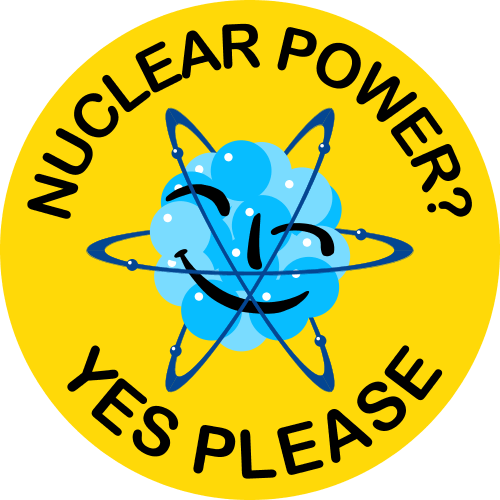In the West (Europe, North America, Japan), that is, the advanced Imperialist countries, the Marxist left, under influence from the broader “Left”, has abandoned, generally, an understanding of science, and energy systems. Previously at various times, it was the champion of science. We have also seen this in areas of medicine as well, with sections of the self-proclaimed Marxist Left opposed vaccination programs.
The purpose of this contribution is defend the use of nuclear energy and science in the fight against ignorance and cultural momentum that has infected the far left for decades. This largely results from the rise of the New Left in response to the U.S. war against the people of Vietnam in the 1960s, a salient event in radicalizing those that came of age in the 1960s and 1970s. My hope in this very brief essay is simply to initiate a discussion about energy and science in light of climate change as a truly frightful threat to our species and all life on the planet. I have no wish in this essay to address every single question regarding nuclear energy and climate change.
What follows below is really a small update to the Climate and Capitalism discussion on nuclear energy here, where socialists both for and against nuclear energy chime in. This debate was over 10 years ago, in the wake of the Fukushima event (where no one died). So, with time, one can and should adjust one’s views. The Breakthrough Institute (a pro-development and very pro-capitalist blog of “Ecomodernists” published my first piece on this titled “A Socialist Case for Nuclear Energy” here. Published it 2013 though it was written in 2011 shortly after the Fukushima earthquake and tsunami.
The basis of the anti-nuclear movement as it came of age in the 1970s was based on two false premises. Firstly that there is a direct connection between the production of nuclear weapons of mass destruction (WMD) and nuclear power generation; and secondly a fear of radiation focused largely on “waste” from nuclear power plants. I will address both below. However, I will start off with my views on renewable energy first.
As I have agreed to make this a short conversation…with longer replies if a debate gets going…Several things need to be addressed. Supporting evidence will follow in the discussion.
Renewable energy is an unmitigated failure
By “Renewable Energy” or “RE”, I mean *specifically* solar and wind energy. I do not mean hydroelectric energy which provides for some countries, such as Norway, almost all their generation needs. Hydroelectricity requires another discussion, well worth having, but as most hydroelectric resources are already built out leaving no available rivers at higher elevations untapped, I want to address actual RE proposals and not all and every aspect of energy generation.
A grid requires instant access to electricity. In fact, it is an aspect of the physics of generation that no electricity is actually produced until someone flips a light switch. That is, creates for demand for it. The electricity is created as needed. It is not something that sits around on the grid waiting to be used. When a person flips on a light switch this increases the load (electrical engineering terminology for “use”). When this happens generators in the system slightly increase the generators’ torque which allows the electrons to flow into the system to that light bulb energized by the light switch. RE can’t provide this sort of generation because there is no real flexibility in the system to allow for that. Yes, generation from RE does in fact power large parts of the grid for periods of time during a 24 hour period, but it has to be supplemented by on demand generation every instance of the day. Not just when the sun is shining and the wind is blowing. Thus, a country like Germany has to keep their coal plants firing or their new gas turbines spinning using Russian provided methane gas to make up that short fall which occurs every day (when Russia decides to sell it).
RE advocates believe “on demand” is a synonym for “fossil fuels”. It is not. The massive build out of gas turbines and continual strip-mining of coal is totally a function of being wedded to the failed policies of renewable energy.
Battery storage is the last great hope for RE. Examples of large, expensive set-ups in Australia and proposals to build more battery storage have been making their way around the web for some time. In every case, to really provide storage for excessively cloudy days, actually weeks at a time in some winter locations – dropping solar energy to almost nothing – batteries would have to power a grid at full load for days at a time. Nothing short of that is acceptable. It means building out many times the solar capacity from what is available at any given time, and building truly expensive battery storage “cities” that would run into the multi-trillions of Euros. Battery power can provide for some hours of power when there is enough storage (taken from RE or the grid in general which is not used for load or demand). Beyond that there is simply no financial scenario that would make this at all cheap, in fact it would make just a simply “24 hour” battery prohibitive in almost all locations in the world. Batteries can work to *mitigate* the rapid load swings from a large RE penetration of the grid, the little ups and downs of demand and generation. But doing so for *all* of peak load, the highest in the day when there usually is zero solar energy, is all but impossible. To do it for more than one cloudy day when there is almost no solar energy, is ridiculously expensive. Batteries do not generate a single watt of energy. It has to be generated and “not used” by the grid, but siphoned to the energy storage device. This lowers the capacity of generators on the grid to provide power.
It would be necessary to overbuild the amount of RE at least 3 times what it can provide the grid at any given time just to allow for storage. In Germany solar energy is only available at ‘name plate capacity’ some of the time. For example if a solar panel has ‘name plate capacity’ (think of as a maximal capacity) of 200 watts, this can only generated for around 15% of the day – when the sun is at its peak, i.e. when ideal conditions are met. In Germany, this is less the further north one goes, and more the further south. It is also much less in winter. Similar considerations apply to wind generation – wind blows adequately around 30% (range 25%-40%) of the day. Hence the grid would never get that “1 MW” capacity over any period of time.
And all of this is so unnecessary if we developed a true nuclear grid!
Military WMD and the waste…
There is a wide spread myth that the nuclear weapons are derived from ‘Spent Nuclear Fuel’ (SNF). With very few exceptions this never happens. It is far cheaper to build what is euphemistically cited “Research & Development” reactors, essentially “piles” to create the needed plutonium for nuclear weapons. Every single country with nuclear WMD uses these “R & D” reactors to make nuclear weapons. There are no exceptions. While India may of have used some SNF or what the world colloquially knows as “nuclear waste”, to make their original nuclear bomb, everyone uses the far cheaper R & D reactors, or task specific reactors to make bomb grade material.
It is impractical to make bombs from “nuclear waste”, nearly all “nuclear waste” (SNF) is reactor fuel that has been sitting in a reactor for 1 or 2 or more years. The plutonium 239 in it is worthless for making bombs, because it is hopelessly contaminated with Pu 240, which cannot be removed effectively by any known means. As for the U235 in spent fuel… well… yes… there is about 1% U235 in SNF, but it’s mixed with 99% U238. [SNF is about 95 to 97% overall uranium … mostly 238… and about 2% fission products… along with some plutonium and small amounts of assorted actinides of greater atomic number than plutonium, such as curium and americium.] As such, the uranium in spent fuel is 1% or so U235, a content not much different from uranium in uranium ore (which is 0.7% U235). Both require hugely expensive, complex, high tech centrifuge complexes to make the very highly enriched U235 [90% and more] to make a crude simple-to-build bomb.
Nuclear waste is simply too difficult to extract the needed plutonium (or residual U235 that is used in nuclear fuel) to garner enough to make a bomb. It can be done, yet no one does this. It is a false issue from this point of view.
There IS a military connection however in two areas. The closest analogy there is to this is the passenger airline. All passenger airlines can trace their ancestry back to the development of strategic bombers, most notably the WWII era B-29 and the soon developed B-52. The same is true for many of the pilots and technicians who fly and service large and small passenger airliners: many are trained by military airforces to do this. The origin and relationship from an engineering and personnel perspective is extremely close and starts with the military. The exact same relationship exists in the world nuclear industry. Primarily U.S. and Soviet era navies developed nuclear energy as a propulsion mechanism for submarines (and later surface ships). It is here where that relationship existed between the military and civilian commercial nuclear energy (though both were developed in parallel and didn’t necessarily have one flow from the other). Most anti-nuclear activists, simply because they really don’t care, always miss this latter point and often lie about the WMD issue of SNF.
and the waste thing?
So “waste” is the one of the first question folks ask about when first delving into the issue of nuclear energy specifically and what clean generation tools exist to address climate change.
Let us begin by understanding what nuclear waste is. There are two basic levels of nuclear waste that regulatory authorities in this area name ‘Low Level Waste’ (“LLW”) and ‘High Level Waste’ (HLW). There is also an intermediate “Medium Level Waste”. The basis of this classification is the amount of radioactive isotopes in the waste. The greatest amount of this waste is LLW and is amazingly broad in scope, basically anything that shows a higher than normal “background radiation” level. Background radiation runs from approximately 1 mSv (milisevert) to 3 mSv globally. There are places on the planet where such natural background radiation is 100 times that number and, no, there are no ill effects on human, plant or animal life because of it. I will return to this issue, obviously, perhaps in a later essay specifically on “radiophobia”.
Ergo, anything “produced by humans” that has a higher background radiation is automatically regulated as “waste” with the LLW designation. It varies from country to country but they are basically the same.
HLW comes from some medical radiation therapy and imaging facilities; usually deemed as “Intermediate Level Waste” depending on a nations regulatory regime. But in this essay, “HLW” really refers to Spent Nuclear Fuel or “SNF” produced in nuclear power plants. While regulated as “waste”, the term SNF is more accurate, because it doesn’t have to be waste – as it can be used as feedstock for advanced fast reactors currently under development in over a dozen countries.
In the US, there is approx. 80,000 tons of this waste. That is very, very little by volume. If you put all 80k tons of it together it would not fill up a giant box store like Costco or Kaufland. Nuclear fuel is very, very dense and thus the amount of it is limited. And, we know where every gram of it is at any given time. Eighty thousand tons (imperial units) is almost the same amount of coal waste generated by the brand, spanking new coal plant that the supposedly climate conscious German government allowed to be built in Cologne. That coal waste doesn’t have a half life and doesn’t get safer in time. Most SNF ceases to be significantly dangerous after 300 years and, as noted above, will be used as fuel for the generation of reactors coming on line in a few decades. SNF is solid and stored in stainless steel concrete casks. It cannot “flow” out if a crack develops (which none have).
Nuclear can provide 100% of energy needs and do so cheaper than all other forms of energy generation. The infrastructure baggage for other sources, be it wind or solar or natural gas, when talking about lifetime costs, are staggeringly high. Such expenses swamp needs for any industrial society. Even one that seeks to transform society by workers revolution, from an increasingly senile and militaristic Imperialism to one based on the freeing of the productive forces in a socialist one.
This article represents the view of the author and not the whole theleftberlin editorial board. We welcome your feedback and articles in response. Please contact us at team@theleftberlin.com




